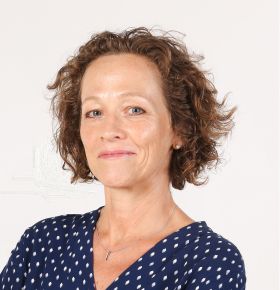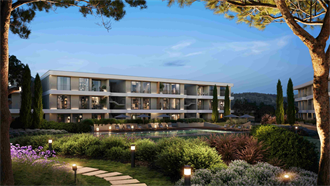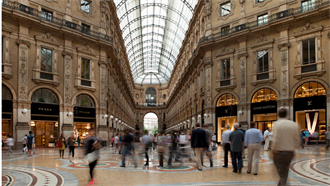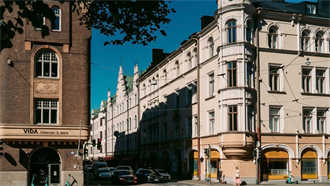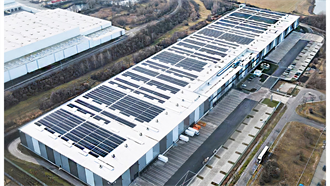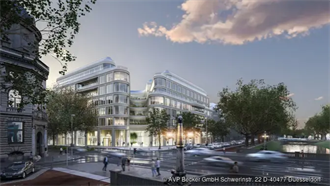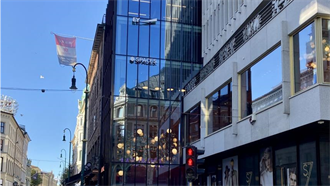Despite deepening development challenges, the investment case for Dutch logistics remains rock solid, say leading market experts who took part in PropertyEU's roundtable discussion in early September.
Lack of land and product, growing environmental constraints, and intense competition for plots and assets – the conditions for entering and expanding in the Dutch logistics market would appear far from ideal. Yet the droves of foreign developers and investors which have made their way to the Netherlands in recent years – and are still arriving – are evidence that there is still good business to be done despite these challenges.
During a wide-ranging, in-person panel discussion hosted by PropertyEU at its Utrecht office in early September, logistics experts from across the field representing advisory firm Savills, investor-manager Cromwell Property Group, investor-developer-manager Hines, industrial specialist P3 Logistic Parks, and real estate lender ING, gave their insights on the red-hot Dutch market and how to tackle the issues that threaten its future growth.
Niek Poppelaars, director and co-head of logistics at Savills Netherlands, summed up the current state of play succinctly at the start of the session by saying business fortunes depended ‘on which side of the table you are on’. For occupiers looking for space it was ‘pretty hard’ to find suitable locations, while investors who had already taken up positions in the market were well placed and ‘definitely happy’.
Savills research presented during the event underscores Dutch logistics’ tantalising appeal: around €1.7 bn was invested in the sector in the first half of 2021, with volumes almost doubling in Q2, setting it on course for another strong year after €3.5 bn was invested in 2020. Prime yields have compressed further and are currently at around 3.65% and even 3.50% in some cases.
On the occupier side of the market, demand is being fuelled by e-commerce firms and, increasingly, grocery chains which are capitalising on the online food trend accelerated by the Covid pandemic. Total take-up in H1 2021 amounted to 3.9 million m², up 64% on the five-year H1 average, making the Netherlands one of the strongest performers in Europe.
Crowded marketplace
But as more players enter an already crowded market, and scarce assets and land dry up, how long can the boom last? Andy Smith, senior managing director and country head of the Netherlands at Hines, said his firm was ‘on the good side of the table’ in terms of investments carried out since entering the market in 2017. ‘We have very good cashflow from very stable tenants – there’s even a waiting list to get onto our parks, and we have the ability to expand land.’
While initial investments in 2018 and 2019 focused on multi-unit logistics parks housing food companies and suppliers of fresh produce, the firm recently broadened its scope by acquiring a 40,000 m² DIY distribution centre and the adjacent 4,000 m² retail premises in the eastern city of Tiel.
Wouter Zwetsloot, head of real estate Europe and managing director Benelux at Cromwell Property Group, said his firm is pursuing a two-pronged strategy. ‘We’re in a position to buy into lower value properties where we can add something ourselves to enhance their relettability,’ he noted. At the same time, the firm is looking at ways to optimise existing assets in its urban and last-mile portfolio ‘by making better use of the square metres of land, potentially investing more in redevelopment’.
P3 Logistic Parks, the European logistics specialist owned by Singapore’s sovereign wealth fund GIC, is on the hunt for ‘infill locations, brownfield developments and forward funding opportunities’, according to Léon Vié, its newly appointed managing director of the Netherlands and Belgium. The firm, which owns seven assets in the Netherlands, forward purchased a 98,000 m² warehouse in the southeastern Echt-Susteren region near the German and Belgian borders last year.
Clear beneficiaries of the boom in transactions – regardless of asset type or size – are providers of finance, the panel heard. ‘Obviously our role is secondary, we follow our clients so we’re dependent on what they’re investing in,’ said Arie Hubers, head of real estate finance for the Benelux at lender ING, which currently has around 15% of logistics loans on its books. ‘We welcome the growth trend because with the retail and office sectors struggling, we will be able to reallocate more of our portfolio to logistics.’
The red-hot market has two dimensions from a lender perspective, he explained. ‘The asset class has become much more mature so there is more liquidity in the market, which for us as a lender is a positive because it gives more stability and solidity to the market and there is a potential exit of the asset.’
On the other hand, the risk premium for logistics has gone down considerably, he said. ‘We’re not that worried, but with signs that following inflation interest rates may be on the rise, our main concern for the future is that we overshoot the compression in yields versus the risk premium you should still have in the asset class.’
ING is also open to financing developments, even though traditionally it has focused on standing assets only. ‘The supply-demand dynamics for logistics are such that we consider the market risk manageable,’ said Hubers.
Land, land, land
For players on the ground, the immediate challenge is how to source assets and land in an increasingly crowded marketplace. Developers are turning to options like tying together several smaller plots to create sites of scale. Redeveloping brownfields – sites that formerly had other uses – offers another route out of the land scarcity conundrum, as does upgrading existing properties and securing adjacent plots.
‘If you are creative and have a lot of knowledge of the market, it is still possible to find your way despite the challenges,’ said Savills’ Poppelaars.
Both Cromwell and P3 are avoiding costly public tender procedures, looking instead to source sites and assets off market. ‘We’re skipping the big tenders for the moment and focusing on niche products that are still available in the market,’ said P3’s Vié.
In Cromwell’s case, which describes itself as more of an asset manager than a developer, scarcity of product combined with strong occupier demand actually provides opportunities, according to Zwetsloot. Lack of new-builds means the company can attract tenants to existing properties which may not have been their first choice but which can be adapted and upgraded. ‘For occupiers, alternatives like that are better than waiting long-term on an available new development,’ he said.
At the end of the day, land is still the holy grail of the industry and the main driver for future growth, the panellists agreed. ‘Land creation is always a problem no matter which market so that’s a global – not just Dutch – phenomenon,’ remarked Hines’ Smith. ‘What we’re looking for, whether that’s core or value add/opportunistic, is high quality, valuable land. The quality of the building and tenancy obviously follow that, but land is really what we’re after.’
Nitrogen and nimbyism
Land scarcity is not the only factor hampering growth in the Dutch logistics market. Strict new norms governing nitrogen emissions have affected zoning procedures – with a knock-on effect on building permits. Introduced in 2019 after the government’s nitrogen policy was found to conflict with the European Habitats Directive, the new norms effectively limit the possibilities for development and agricultural activity because more areas have been designated as biodiversity, or Natura 2000, hotspots. This has resulted in several large construction projects – including logistics – being put on hold.
‘It’s a bigger problem here than in other European countries because more biodiversity locations have been designated here,’ said Poppelaars. Similarly, tough new limits for the level of toxic PFAS chemicals in soil – which have been linked to several types of cancer and other health problems – have delayed construction activity.
P3’s Vié said he was ‘pessimistic’ about the nitrogen and PFAS issues being resolved imminently. ‘I think the (development) problems will increase in the coming year, because zoning is at a complete standstill,’ he told the panel. ‘The problem is not moving left or right, it’s waiting for the government, and we don’t have a government at the moment.’ (The Netherlands is waiting for a new government to be installed after elections were held in March, ed).
This stalemate is affecting approval procedures across the board, explained Vié, an industry veteran who previously held a European asset management role at Global Logistics Properties. In order to change the zoning for a brownfield development – and get permission to redevelop it – the municipality where the project is located has to obtain approval from the relevant provincial authorities. ‘So, while brownfields are still a solution because of the environmental benefits, which make them easier to “sell” to the authorities when trying to get the zoning permit changed, it’s getting harder and harder to do them. And as long as there is no solution from the government, it will become worse,’ he said.
Smith said it was important to note that the nitrogen and PFAS issues were not really municipally driven but stemmed from a breach of EU law. ‘It’s a national legislative issue which is challenging. It was a violation of an EU law that created this scenario in the first place and perhaps, in retrospect, the government could have been quicker to respond. This is why for me it’s something that we just have to deal with. It’s what the development risk premium is for.’
Increasingly, development projects are also meeting with resistance from local communities, especially where big box sheds are located close to residential areas. Size, energy and traffic issues, as well as aesthetic and pollution concerns, are the main focus of these nimby (Not In My Back Yard) movements. According to Smith, some of the nimby issues can be resolved by ‘having a more positive outlook on what logistics is contributing to local economies’.
In addition, nurturing good relationships with municipalities – which involves ‘drinking lots of cups of coffee’ – generally paid off, he said, especially in locations used to logistics and industrial operations. At Hines’ recently purchased asset in Tiel, for example, the municipal authorities had for years been trying to get a new piece of land approved for industrial development, ‘but it was the administrative and political process that was a hurdle to navigate’, said Smith. ‘If you’re already in a place that’s supportive of logistics, speaking to the municipality about a slight zoning change to the left or right is not that difficult as long as the tax base remains the same.’
For ING’s Hubers, the environmental problems are broader. ‘The Netherlands is a very densely populated country. The question in the medium term is how much logistics we can and want to fit in given the competing demands for housing, agriculture, nature etc. So I don’t think these issues will go away – they manifest themselves in things such as nimbyism and PFAS, but it’s a much wider problem – we have competing demands for space in the Netherlands and we have to deal with that somehow.’
Building costs and power issues
Zwetsloot of Cromwell pointed to rising construction costs, on the back of a shortage of building materials, as another source of concern. ‘It’s getting to a point where we expect price rises will have an impact on rents, which of course is good for logistics property owners, but at a certain stage affordability will also become a talking point for tenants. There’s a limit to what they can pay.’
Power issues have also been hampering logistics operations in certain areas, with some warehouses reportedly unable to draw sufficient electricity from, or supply surplus energy (generated by solar panels) to the grid, the panel heard. Said Poppelaars: ‘We’re aware of the problem, especially in the Schiphol area, but there you see that the market is coming up with its own solutions. We know of developments with a lot of solar panels on the roof which have a large battery next to the development to store all the power. Those kinds of solutions are becoming more common.’
According to Vié, the issue affected mainly data centres and XXL logistics developments, which could, if needed, band together to build communal power storage facilities. ‘That’s an expensive job but it’s possible,’ he said.
Shifting hotspots
Strong demand for assets coupled with rental growth is driving the emergence of new logistics zones across the country. Whereas logistics activity has traditionally been concentrated along the banana-shaped corridor of hotspots leading from the port of Rotterdam to the German border, it is now fanning out northwards and eastwards, said Poppelaars.
Since the rise four to five years ago of ‘agglo logistics’ – locations from where the entire Randstad agglomeration can be reached within an hour such as Bleiswijk and Berkel en Rodenrijs to the south of Rotterdam – new areas ‘have been popping up and developing very rapidly’, he explained.
Examples of these new hotspots include the northern and eastern areas around Almere, Zwolle, Apeldoorn and Almelo as well as the central Tiel/Geldermalsen and western Waddinxveen regions.
The new distribution patterns are being driven by occupiers – increasingly e-commerce firms and online grocery retailers like Picnic – which are ‘seeking to build up their networks all over the country,’ Poppelaars noted. Both P3 and Hines confirmed this trend; around 43% of P3’s warehouse tenants are now e-commerce or food-related, against 20% three years ago, said Vié. ‘That includes both the big food distributors and the supermarkets, so the Picnics of this world.’
Hines’ Smith attested that his firm, too, had experienced ‘an explosion in grocery-related tenants as more and more consumers ordered their food online’. A notable trend higher up the food chain is that agro-logistics tenants are becoming more sophisticated in their demands and consolidating their businesses, he said. ‘They were once privately held and now they’ve consolidated into groups, needing bigger and more efficient space.’
Brexit boost
The Dutch logistics market has also reaped dividends from Brexit, as British companies seek to gain a foothold on the European mainland to avoid having to pay additional import tariffs on goods from Asia that are destined for Europe. For the moment, rather than establish their own facilities, many UK firms are partnering with Dutch logistics providers until a clearer picture emerges of future trade regulations, said Poppelaars.
‘It’s still early days and they don’t really know what will happen in the mid term, so what we’re seeing is that a lot of Dutch logistics companies are benefitting from this trend. But in a couple of years, if the regulations are still the same as they are now, I think they will definitely take the step and come over to the Netherlands.’
Can the market absorb this extra demand? In theory, yes, according to Cromwell’s Zwetsloot: ‘The Netherlands can play a very big part in being that gateway to Europe, for other reasons than just Brexit,’ he said. ‘Look at what happened in the Suez Canal and situations like that which potentially require more stock to be held nearer to home.’
At the same time, he noted, the Dutch market isn’t able to deliver the product to match the demand, which will, as a result, leak to other countries. ‘We’re talking here about land scarcity and that is holding us back in taking that role. Although the government has promoted the Netherlands as a logistics hub for Europe, at some point that goes against the opportunities we still have to grow the logistics business.’
P3’s Vié concurred: ‘We don’t have the capacity to get all that demand stowed away. So demand will also go to Germany and Belgium.’ He added: ‘A lot of money has flowed into the Dutch logistics sector in the last two years and there has been a lot of development. The market is still booming and next year will also be booming but if we are talking about the development pipeline I’m a bit concerned. How much more can we see out there, I think that’s the question.’
Could the time come when the Netherlands, with its coveted strategic position on the North Sea, loses its appeal in favour of other markets? Smith was adamant that the Dutch market’s attractions will remain. ‘It’s an incredibly low-barrier-to-entry environment and a very sophisticated and mature real estate market so it’s easy to come here – even though after you arrive you find a lot of people are trying to do the same. And if you think it’s hard and challenging here, compared with other markets where Hines is also invested, like southern Europe, it’s incredibly difficult there. The Dutch market provides a soft landing for anyone looking to be in European logistics.’
*******************************
Amsterdam Logistic Cityhub – shape of things to come?
Developer CTP’s acquisition of the Amsterdam Logistic Cityhub (ALC) for €307 mln in August caused a stir in more ways than one. Not only is it the biggest-ever, single-asset warehouse deal in the Netherlands, it is also seen as exemplifying the next generation of last-mile assets that are pushing the boundaries in terms of design and sustainability.
Located in the port of Amsterdam with direct access to the city’s ring road and the North Sea Canal, the XXL hub will comprise 120,000 m² of multi-layer storage and last-mile distribution space when it completes in Q4 2022. It will provide around 11,000 m² of office space, 1,700 parking spaces, 200 loading docks and a private 180-metre quay.
Among its most striking features is the use of electrically powered boats to transport goods via waterways to the city centre. The complex aims to be energy-neutral and generate its own power through solar panels and wind turbines. It is targeting BREEAM Excellent certification.Does ALC provide a model for future last-mile assets?
Opinions among the panel participants were mixed. ‘The idea is that you have one central hub on the border of the city from where you can go into the city for the real last mile, using the latest generation of electric vehicles for distributing product, as well as waterways,’ said Poppelaars of Savills, which advised CTP on the transaction.
‘I think the ALC site is great and it’s a very large one – but for the last mile and for brownfield developments it’s difficult to get a plot that size in the right spot. Electric vehicles are definitely something we’re going to see more of in the near future, but the challenge is getting enough power to operate everything,’ said Cromwell’s Zwetsloot. ‘I don’t think all future assets will be multi-level, but I do think you will see that trend coming through more with the lack of available land.’
Said Smith of Hines: It’s an interesting asset, however I do wonder if the extraordinary costs of building a multi-storey logistics facility is a sustainable model for solving the land issue. It’s always going to be cheaper to drive a little bit further.’ ‘I find it difficult to imagine that it’s a model for how to make a real dent in what we need to do in terms of supplying more logistics space to anyone except for the very last-touch type tenant.’Vié of P3 questioned future rent levels: ‘It’s a good building but in my opinion it has an unproven rent level.’


